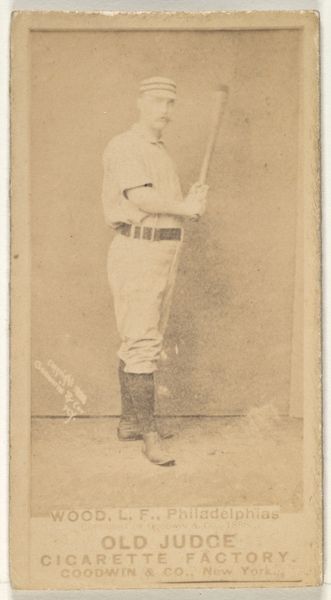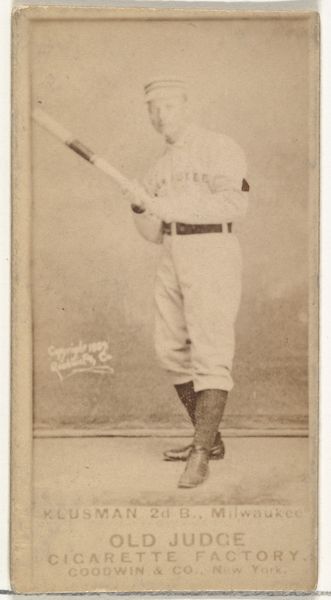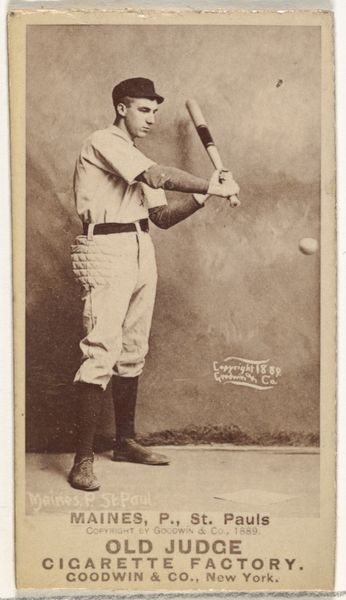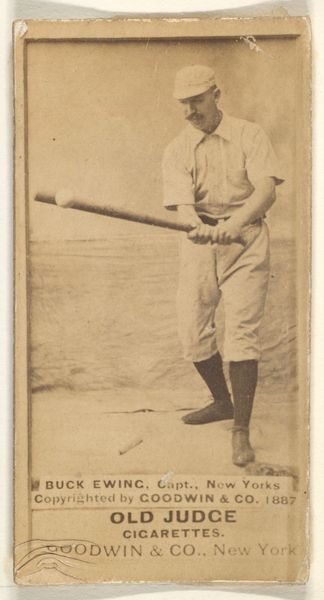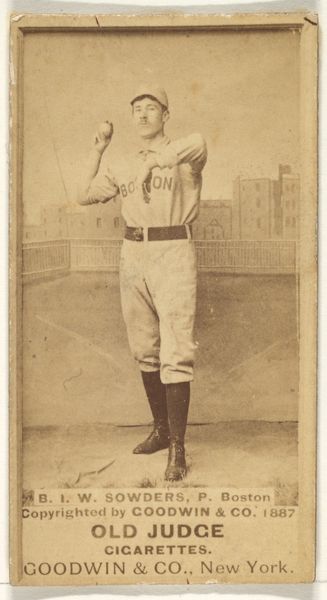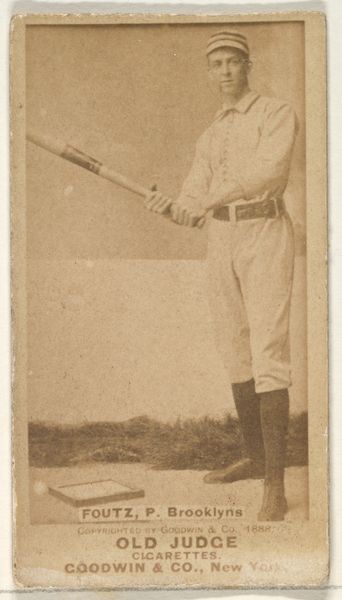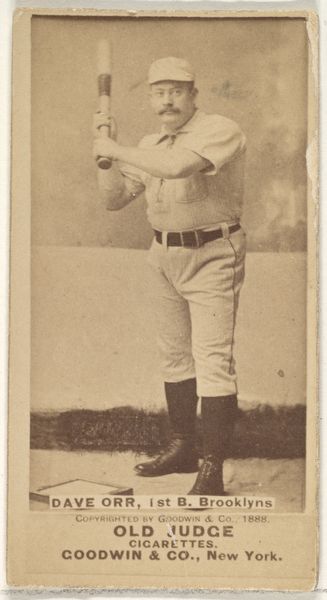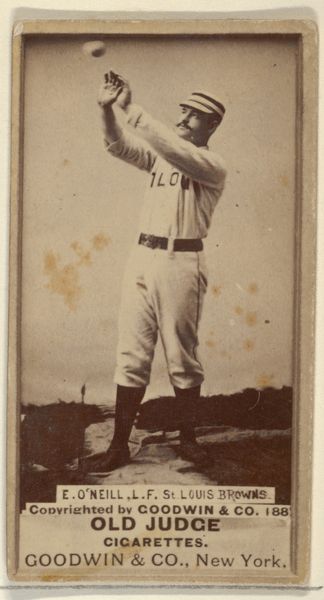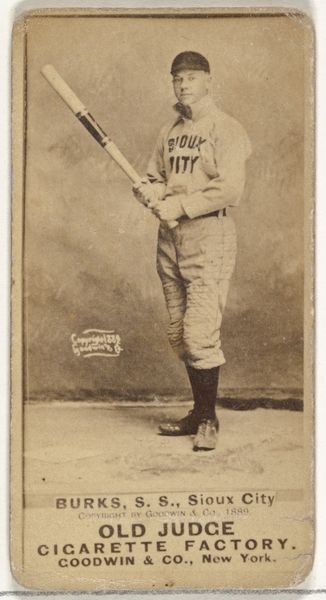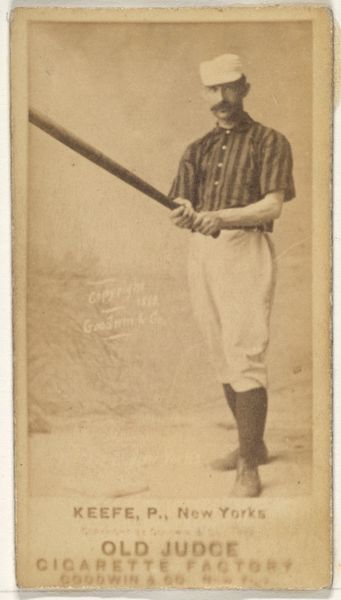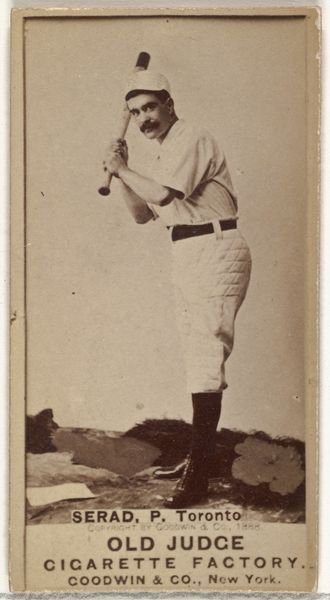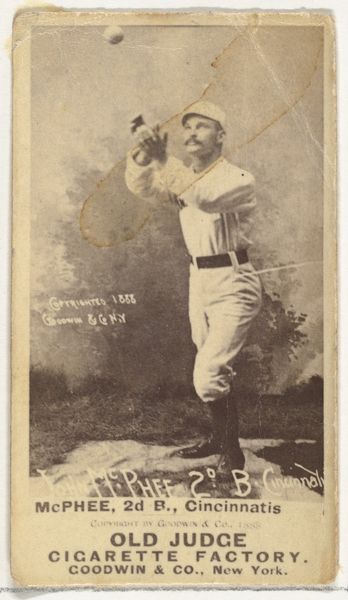
Nagle, Catcher, Omaha Omahogs/ Lambs, from the Old Judge series (N172) for Old Judge Cigarettes 1889
0:00
0:00
drawing, print, photography, albumen-print
#
portrait
#
drawing
# print
#
photography
#
albumen-print
Dimensions: sheet: 2 11/16 x 1 3/8 in. (6.9 x 3.5 cm)
Copyright: Public Domain
Curator: What strikes me is the intense focus in the ballplayer’s eyes; there is such unwavering concentration emanating from the albumen print. Editor: Yes, that is definitely present in the work, but for some, a name like ‘Old Judge’ Cigarettes paired with this portrait brings to light questions about the objectification of athletes and their link to unhealthy lifestyles, highlighting an era rife with commercial exploitation. Curator: Precisely. It is part of a series created in 1889 by Goodwin & Company titled, "Nagle, Catcher, Omaha Omahogs/Lambs, from the Old Judge series (N172) for Old Judge Cigarettes." What began as albumen prints used in cigarette packs transformed into a phenomenon reflecting American life and commercial culture. These became collectable objects. Editor: It’s a fascinating reflection on the history of advertising. But tell me more about the context of representing athletes in this era and how these images functioned beyond promotion. Was there an element of myth-making in play? What kinds of class tensions or labor disputes might this imagery smooth over? Curator: Good questions. I see this as the start of idealizing the sporty figure. In terms of class, there is nothing here; class is not revealed through clothing. Editor: Even though the man’s clothes suggest little about class divisions, his work conditions were not equal with other races. During this period there were black leagues which were not recognized. Does it not romanticize physical labour while suppressing the injustices pervasive during the late 19th century? These images served to solidify cultural narratives of whiteness and achievement at the expense of acknowledging systemic inequalities in sports. Curator: A point well taken, there’s always the flipside to history. Despite the exploitation that existed at the time, baseball itself was something the masses connected with regardless of gender, class or even race. Editor: Certainly a duality to acknowledge. By focusing on these overlooked dimensions, we uncover critical aspects about labor, racial identity, and the shaping of cultural icons during a period marked by significant social transformation. It forces a deeper exploration, offering us a wider scope on history. Curator: It has certainly provided me with a changed perspective.
Comments
No comments
Be the first to comment and join the conversation on the ultimate creative platform.
